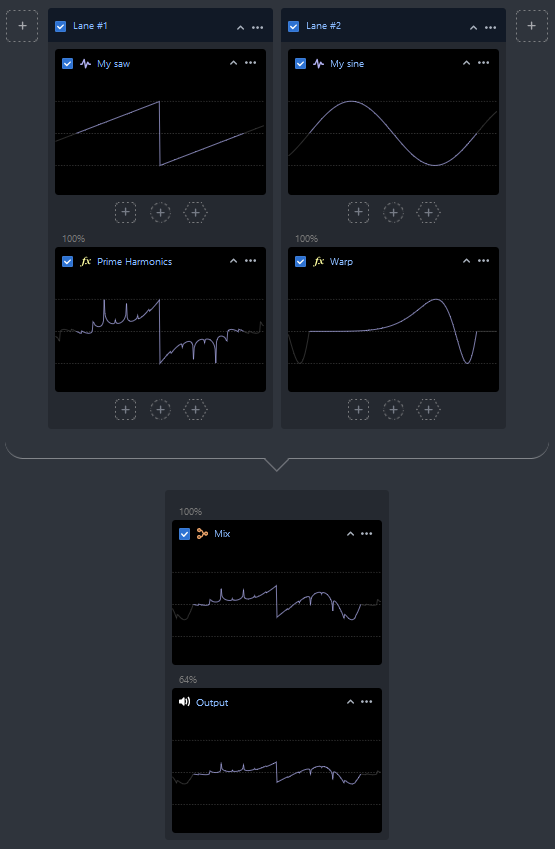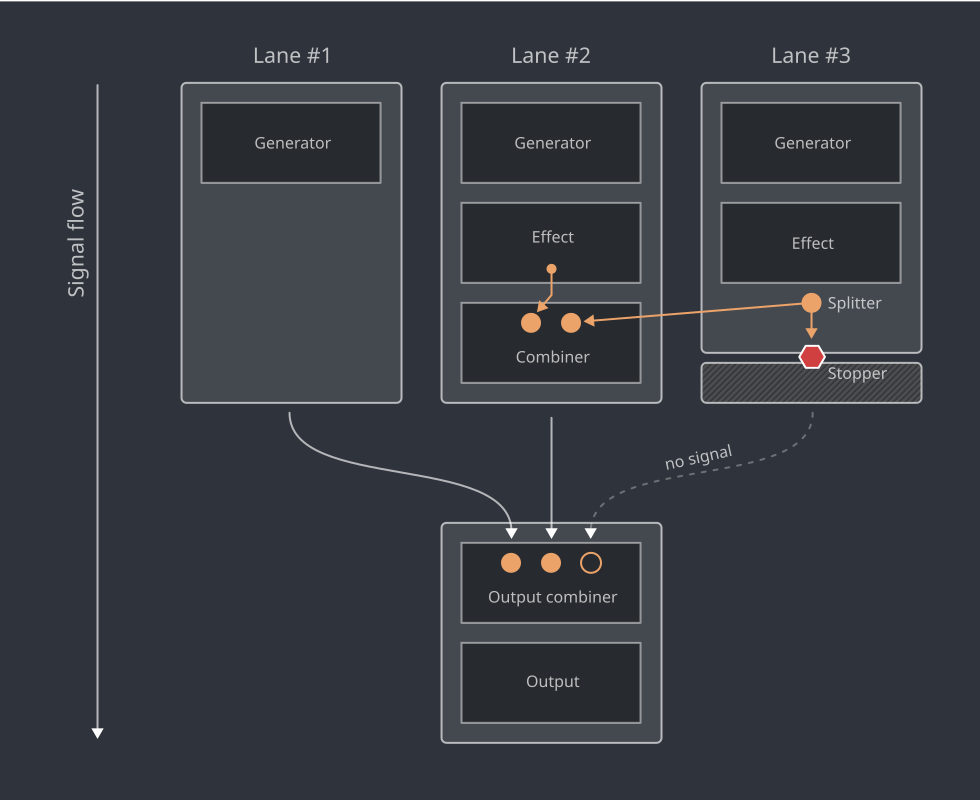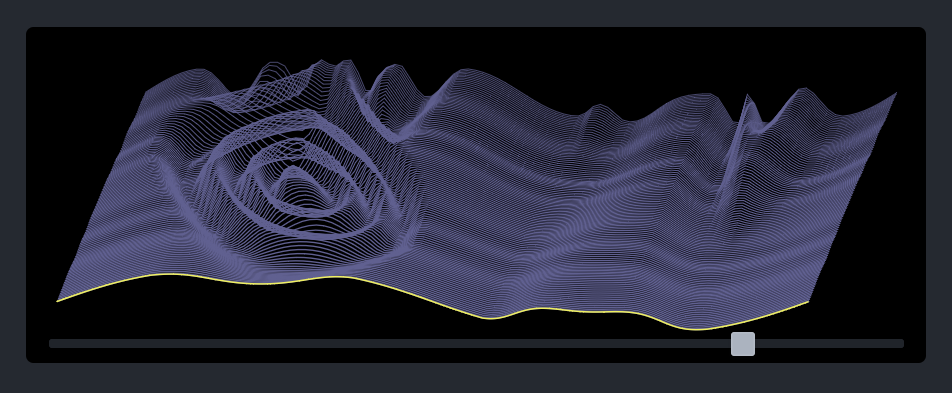Getting started
About
CarveToy is a free online tool for creating and sharing custom wavetables, which can be used in various hardware and software synthesizers.
It aims to be a playground for discovering new, evolving sounds. You should be able to create a usable wavetable in about a minute or spend hours experimenting with the same project, creating and downloading multiple wavetable variants.
The Workflow
The workflow focuses on stacking various modules and manipulating their parameters to achieve (or stumble upon) interesting sound changes. It should feel familiar to sound designers and music producers working with DAWs, VSTs, and modular setups.
The UI offers visual feedback for each module's output, aiming to simplify the process with visualizations, tooltips, descriptions, and clickable placeholders that invite exploration.
CarveToy provides a wide range of effects, from basic to more "creative" ones. The latter originate from the author's "under-the-shower" ideas, experimentation, and pure fun.
Note
This documentation does not provide a full reference for the UI and modules. Instead, it offers an overview of the tools and highlights details that may not be obvious at first glance.
Lanes and modules
Sound is produced through modules that are strung together within lanes, creating a basic linear signal flow. Signals can then be split and recombined within the same lane or across multiple lanes.
Combiner modules typically take two or more input signals, combine them in various ways, and produce a single output signal. The signal flow through lanes can be stopped as needed. Signal feedback loops are not supported.
A special "output combiner" module gathers all signals from the lanes and sends the combined result to the final output module.
Rendered wavetables
CarveToy renders all the sound in the browser (which might result in additional analog sound from your CPU fan 😉).
The results can be downloaded either as a single WAV file or as a ZIP file containing each frame as a separate WAV file. Various frame sizes and WAV bit depths are supported.
Frames
CarveToy operates with 256 frames, each containing 2048 samples. However, the download dialog allows for the export of any number of frames (up to 256) in any desired order. Additionally, frames can be downsized if needed.
Moreover, the tool supports sub-frame rendering, which re-renders a subset of frames into a new set of 256 frames.
Where to start
You could read the rest of this documentation 😉, but since the tool encourages a hands-on approach, you probably don’t need to.
Instead, dive right in! Start from scratch with a new empty project and add modules as you go. This might be easier than navigating through existing complex projects...
... However, if you're feeling adventurous, find an interesting shared project and:
- Extract interesting parts using sub-frame rendering,
- Tweak parameter values (turn knobs) on modules,
- Adjust modulation curves,
- Disable certain modules,
- Rearrange module positions,
- Replace modules with different types,
- Or simply make it your playground and experiment freely.
Disclaimer
Warning
As with all sound-producing software, sounds can get loud quickly. Take time to get familiar with the tool before cranking the volume knobs and sliders to the MAX. Expect a wide range of loudness across all shared projects.
Please take care of your hardware and biological equipment 📢😵💫📢.
The tool is provided in the hope that it will be useful to others, but no guarantees or promises are made. The author assumes no responsibility for any kind of possible damage.
Read the Terms of use and the Privacy Policy.



